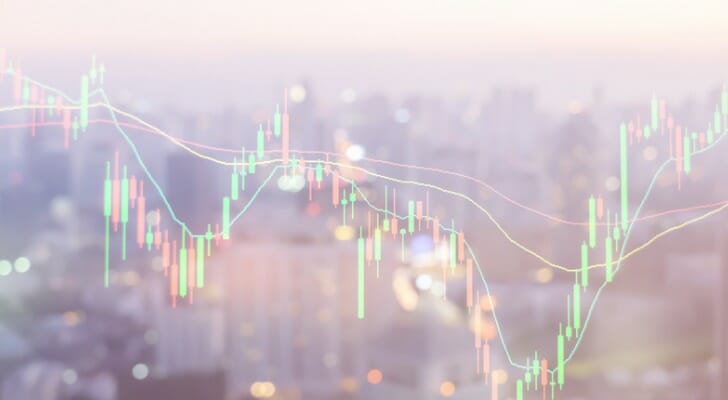
Investing in the stock market inevitably brings risk, and diversifying a portfolio doesn’t eliminate it. There’s always a systematic risk. In other words, there’s always an inevitable risk that affects a market segment or the market as a whole. Systematic risk affects the entire market, not just a single stock or industry. Here’s what investors need to know. You can also work with a financial advisor to minimize the risk that you face in the market or become more educated about risk as a whole.
The Basics of Systematic Risk
Also called undiversifiable risk or aggregate risk, systematic risk is the inherent risk that comes along with investing in the stock market. It’s categorized by risk factors that simply cannot be helped, such as earthquakes, major weather events, recessions, wars and even changes in interest rates.
For example, an interest rate hike can increase the value of newly issued bonds. Meanwhile, it could also decrease the value of certain equities if investors think companies are cutting spending. In that case, you’re going to want to stock up on securities that generate income to offset stock losses.
An important defining characteristic of systematic risk is that it affects an entire sector of the market or even the market as a whole. Rather, it’s not industry or stock-specific.
Why Systematic Risk Matters
Investors should familiarize themselves with systematic risk for a few reasons. First, since this type of risk is unavoidable, the chances are high that an investor will take a hit due to systematic risk at one time or another. After all, wars, weather events, and natural disasters happen.
Second, systematic risk cannot be mitigated by portfolio diversification. Spreading out your investment portfolio across many types of financial instruments and sectors of the market will not lessen the risk of investing, in this case.
But an investor can help brace themselves against systematic risk by ensuring their portfolio contains many different types of asset classes, such as stocks, real estate, even a fixed income investment like treasury bonds. In the event of a major market shift due to a systematic risk factor like a weather event, these investments will all be affected differently, which will, in turn, lower your total risk.
Of course, investors can also avoid any type of risky investments, which will effectively eliminate the risk of systematic risk. But that wouldn’t be a sound investment strategy and would severely limit an investor’s potential returns.
Systematic Risk vs. Unsystematic Risk
 Systematic risk is indicative of a larger factor that affects either the entire market or a sector of the market. This type of risk includes natural disasters, weather events, inflation, changes in interest rates and even socioeconomic issues like war or even terrorism.
Systematic risk is indicative of a larger factor that affects either the entire market or a sector of the market. This type of risk includes natural disasters, weather events, inflation, changes in interest rates and even socioeconomic issues like war or even terrorism.
Unsystematic risk occurs on a much smaller level. Also called specific risk or diversifiable risk, it’s a risk factor associated with a specific company or industry. Strikes, mismanagement, or shortage of a necessary component in the manufacturing process all qualify as unsystematic risks.
But both systematic risk and unsystematic risk are important factors in the market as a whole. That’s because total risk combines both systematic risk (earthquakes, natural disasters, fluctuations in interest rates) and unsystematic risk (company mismanagement, supply chain issues and even a new competitor).
Systematic vs. Systemic Risk
They sound similar, but systematic and systemic risk have vastly different meanings.
Systemic risk is the risk that a company-level event could destabilize an entire industry. During the financial crisis of 2008, many companies deemed “too big to fail” did just that. Systemic risk is also a risk imposed by interconnected organizations where the failure of one organization within a system or market can cause a ripple effect. This ripple effect can then push the entire system or market into bankruptcy or collapse.
Companies and organizations that carry systemic risk are a significant part of the economy. As a result the U.S. government often intervenes in company-level events by enforcing regulations
However, there are times when the federal government sits idle instead of intervening with a large company. A growing economy can influence the government to give companies time to adjust. Systematic risk is the potential volatility within the overall market. This type of risk is not avoidable, but there are ways you can manage it.
The Bottom Line

Systematic risk is a risk that impacts the entire market or a large sector of the market, not just a single stock or industry. Examples include natural disasters, weather events, inflation, changes in interest rates, war and even terrorism. You can’t mitigate systematic risk by diversifying your portfolio, but diversifying assets can help. That’s because all assets react differently to major market shifts.
Investing Tips
- If you’re looking to minimize risk or determine your risk tolerance, you may want to speak with a financial advisor. Finding the right financial advisor that fits your needs doesn’t have to be hard. SmartAsset’s free tool matches you with up to three vetted financial advisors who serve your area, and you can interview your advisor matches at no cost to decide which one is right for you. If you’re ready to find an advisor who can help you achieve your financial goals, get started now.
- You can calculate your risk tolerance even without an financial advisor. SmartAsset’s investing guide can help you determine your ideal risk level for investing. It also can help you figure out how your money will grow over time and how much inflation and capital gains taxes can affect your investments.
Photo credit: ©iStock.com/Extreme Media, ©iStock.com/Chainarong Prasertthai, ©iStock.com/scyther5